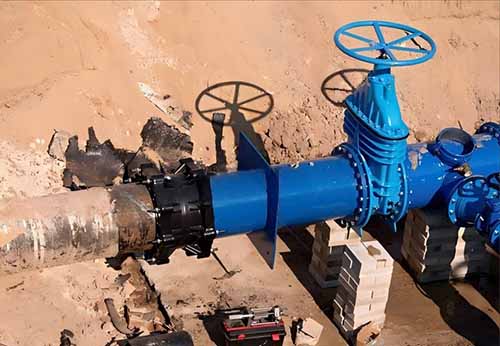I. Internal Anti-Corrosion of Valves
Internal anti-corrosion focuses on protecting the inner surfaces of the valve cavity that come into contact with the medium, preventing corrosion caused by the medium. Key measures include:
- Material Selection Based on Media Characteristics: Select valve materials according to the corrosiveness, temperature, pressure, and other properties of the medium. For highly corrosive media, corrosion-resistant materials such as stainless steel or alloy steel are recommended.
- Coating Protection: Apply anti-corrosion paint to the inner cavity to form a protective film, isolating direct contact between the medium and the valve interior. The choice of paint should align with the medium’s properties and operating environment.
- Optimized Design: Improve valve structural design and manufacturing processes to minimize corrosion risks. For example, avoiding stress concentration points and reducing welding joints can lower susceptibility to corrosion.

II. External Anti-Corrosion of Valves
External anti-corrosion protects the valve’s exterior and connected components from environmental corrosion. Key measures include:
-
Surface Cleaning and Treatment:
- Mechanical Rust Removal: Use sandpaper, wire brushes, or similar tools to remove rust and contaminants.
- Sandblasting: Use compressed air to propel abrasives at high speed onto the valve surface, removing contaminants and oxidation layers while enhancing surface roughness and coating adhesion.
-
Coating Protection:
- Anti-Corrosion Paint Spraying: Apply paint to form a protective barrier against oxygen and moisture. The paint type should match the valve material, environment, and corrosion resistance requirements.
- Powder Coating: Spray plastic powder onto the valve surface, followed by high-temperature curing to create a dense, durable layer.
- Electroplating: Coat the surface with corrosion-resistant metals like chromium or nickel.
-
Additional Protective Layers:
- Install Protective Covers: Use plastic or rubber covers to isolate the valve from direct environmental exposure.
- Wrap Anti-Corrosion Tapes: Apply polyethylene or fiberglass tapes to form an external protective layer.
-
Electrochemical Protection:
- Anodic Protection: Apply an anodic current to form a passivation layer on the metal surface, inhibiting corrosion.
- Cathodic Protection: Use an external current to make the valve act as a cathode in a corrosion cell, preventing oxidation. This method is particularly effective for buried or submerged valves.
-
Regular Maintenance:
- Conduct periodic inspections to detect and address corrosion or wear. Clean surface contaminants and corrosion products to maintain smoothness and integrity.
-
Environmental Control:
- Where feasible, mitigate corrosion by regulating environmental factors such as temperature, humidity, and oxygen levels. Examples include using open-air facilities or ventilation systems to reduce ambient temperature and moisture.
Pre: Valve Selection for Corrosive Media Such as Strong Acids and
Next: none










